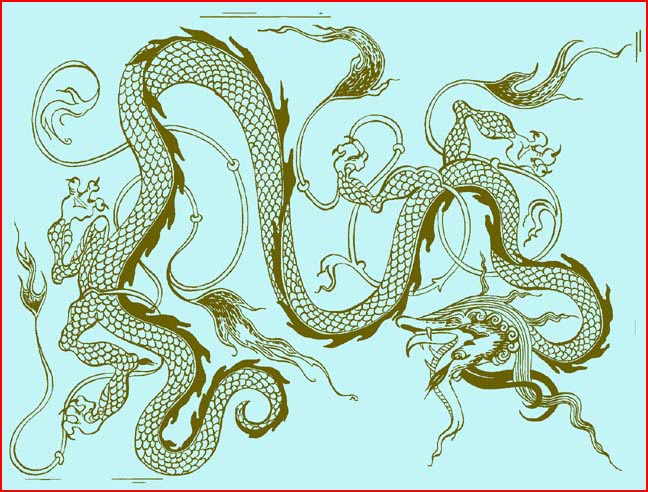|
|
||
 Credit/caption: a traditional Near Eastern dragon, based on a design published by Ramona Jablonski (Traditional Designs of Armenia and the Near East |
||
|
pic of the day Links:
Society for
|
Aug 10, 2004 For several millennia, serpents and dragons have occupied the minds of storytellers the world over, and modern theories, explanations, and rationalizations are as abundant as the cultural variations on the theme. Dragon-like monsters soaring across the heavens rank among the most enigmatic and fanciful icons of the ancient cultures. These mythical reptiles come adorned with feathers or wings, sprouting long-flowing hair and fiery, lightning-like emanations. Every detail of such beasts defies naturalistic reasoning. Yet accounts from widely separated cultures attribute many identical features to these biological absurdities. When researchers seeking to resolve a mystery have explored every possibility they can imagine, but find no answer, it becomes increasingly likely that the truth is simply outside the boundaries of current assumption. Until very recently historical researchers had no reason to think of plasma when considering the mysteries of the cosmic serpent or dragon. Yet almost everything about the mythic archetype finds striking counterparts in the behavior of electrified plasma, now known to fill interplanetary, interstellar and intergalactic space. Under the influence of electric currents, plasma produces filamentary, undulating, spiraling formations, with life-like attributes. Indeed, it was this life-like quality of electrified plasma that inspired Irving Langmuir to borrow the term from biology (blood plasma). Independent investigators, with an eye to electrical phenomena, suggest that our early ancestors saw heaven-spanning plasma discharge in the sky, when Earth moved through a more dense plasma environment. Earthshaking electrical activity not only decimated early cultures but dominated human imagination for thousands of years. But only in recent decades have plasma experts identified complementary plasma formations in the laboratory and in remote space. Is it possible that our cosmic environment was once alive with electrical activity? If so, it is essential that the cosmic serpent or dragon be investigated from a new vantage point, one that is open to the study of electrical phenomena in our sky not that long ago. |
|
|
Copyright 2004: thunderbolts.info |
||
